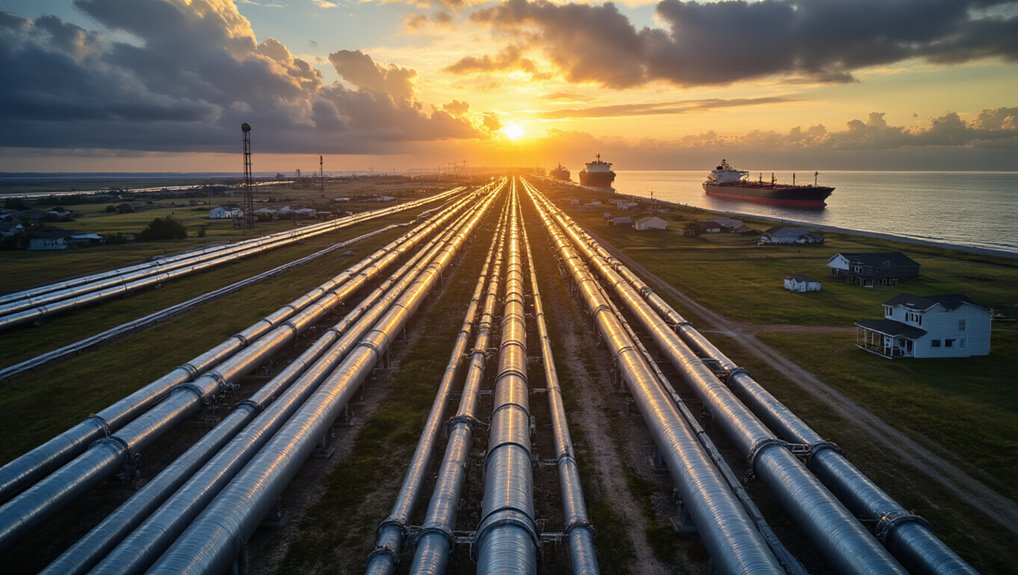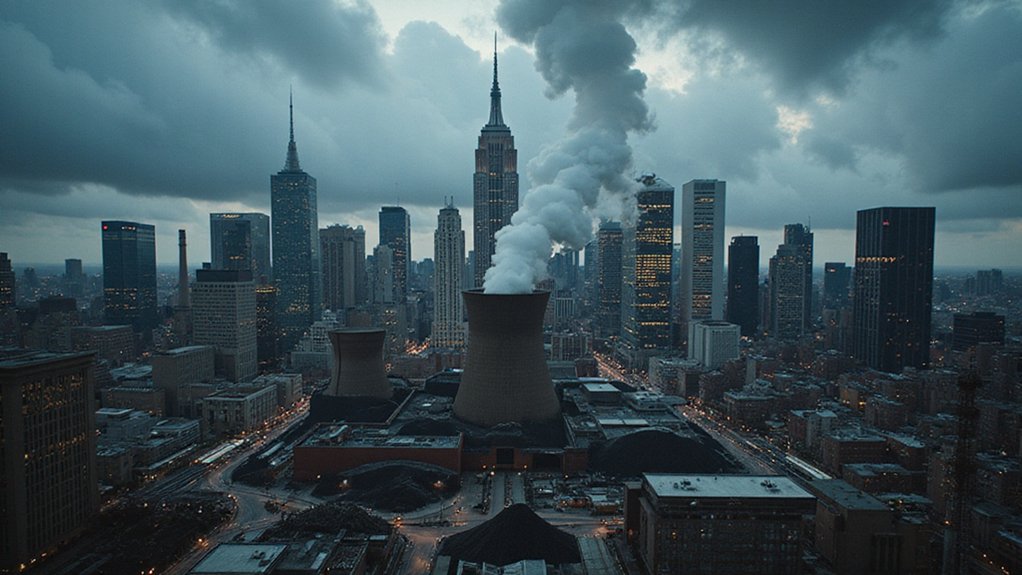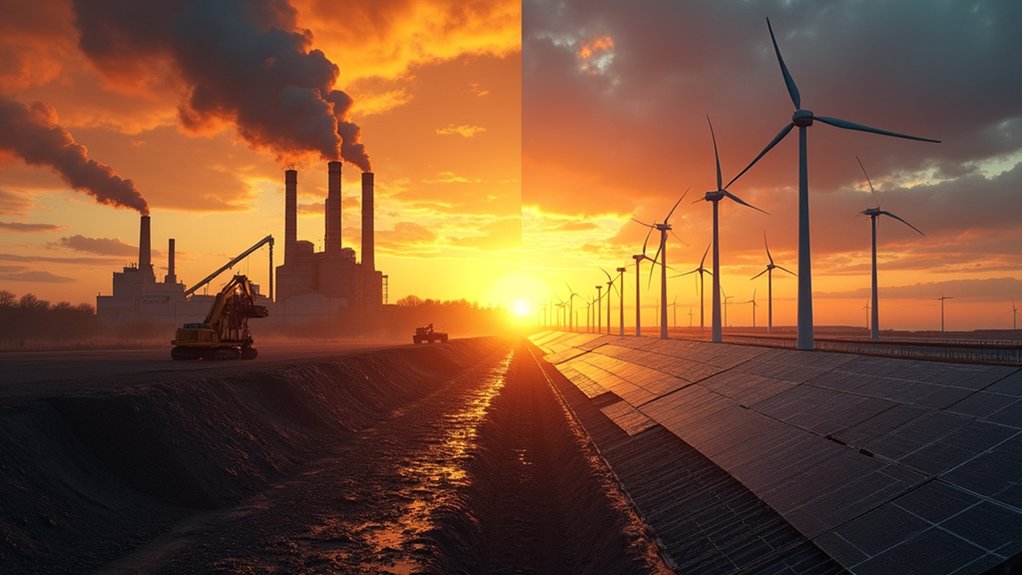America’s pipeline network is exploding. The numbers tell a wild story: 17.8 billion cubic feet per day of new capacity added in 2024 alone, beating the previous year for the second time running. Interstate projects crushed intrastate ones. Texas and Louisiana alone saw 8.5 Bcf/d of new capacity, all aimed at feeding those hungry LNG export terminals.
Here’s the kicker—more than three-quarters of pipeline capacity under development isn’t for American homes or businesses. It’s for shipping gas overseas. The 10 largest planned pipelines? Every single one built for LNG export. About 80 percent of active pipeline projects exist solely to send American gas abroad. So much for energy independence serving Americans.
The scale is staggering. Planned transmission pipelines would add 99 billion cubic feet per day of capacity. That’s basically equal to everything America produces right now. The market’s fat and happy too, valued at $2.86 trillion in 2025 and heading toward $3.37 trillion by 2029. A nice 4.1% annual growth rate keeps investors smiling.
But wait, there’s more. These new pipelines would belch out more greenhouse gases than every coal plant in America combined. The CO2 emissions from these planned pipelines could be 2.5 times greater than those from all U.S. coal-fired power plants. That’s not exactly helping the climate situation. The infrastructure locks in natural gas dependency for decades, making any clean energy shift that much harder. Smart pipeline tech and safety measures are trending, sure, but they don’t fix the fundamental problem. Meanwhile, coal’s contribution to U.S. electricity generation continues its inevitable decline, dropping to just 16% in 2023.
Global energy demand keeps climbing. Oil consumption jumped 5.3 million barrels daily in 2021, with projections showing another 1.4 million b/d increase in 2023. The Appalachian, Haynesville, Permian, and Eagle Ford regions saw massive capacity boosts—6.5 Bcf/d worth. Small projects chipped in another 3.0 Bcf/d. Meanwhile, NRG Energy and other companies plan to construct over 5 GW of natural gas plants starting in 2029 to meet America’s growing electricity appetite.
The pipeline boom rolls on, funneling American natural gas to foreign shores while environmental concerns take a back seat. Infrastructure modernization sounds great until you realize it’s mostly about maximizing exports, not serving domestic needs. America’s building pipelines at breakneck speed, just not for Americans.
References
- https://www.eia.gov/naturalgas/data.php
- https://www.eia.gov/todayinenergy/detail.php?id=64744
- https://insideclimatenews.org/news/02062025/us-gas-pipeline-buildout-mostly-for-export/
- https://www.aga.org/research-policy/resource-library/natural-gas-market-indicators-february-27-2025/
- https://www.researchandmarkets.com/reports/5820053/gas-pipeline-infrastructure-market-report









